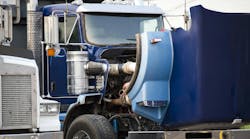As winter '09 rolls on, used trucks remain a buyer's market, albeit one seeking buyers, says Terry Williams, editor of Penton's Truck Blue Book. Looking ahead to when fleets start buying or leasing new again, Williams cautions against blindly embracing the idea that trucks will fetch a premium on the used market if they remain within the rough confines of 3 yrs./350,000 mi.
Williams says he has heard of this bromide, but he wonders “for how long will that work — until everything is the same? That idea makes me think of the late '90s when everyone said ‘spec a big sleeper and big-horsepower engine.’ Everyone did and then the value was no longer there.
“In fact,” he continues, “that approach hurt the lifecycle of the tractor because the second or third user could not be, for instance, a farmer or dock driver who needs smaller, lower sleepers, or could economically convert the sleeper to a day cab.”
Williams figures the “3/350” strategy could likewise “tank the value on older and higher-mileage units because everyone would believe they could get one [of the younger units]. Mileage will always be king, whether it is more value in today's market or if you have 50 ‘like’ units, then the lowest-mile vehicle will sell first.”
“The question also is whether that is good all-around advice or good advice for now, given the market conditions. Certainly, I think everyone is trying something to make them stand out. Take the aero tractor market. It's like the compact car market — a lot of great vehicles with similar features, similar price points. The design is about the same, so what is the ‘play’ to get buyers in the door?
“I believe part of that play will be the vertical integration of Class 8 vehicles,” he continues. Under that scenario, “a single-source provider will not only put out better fuel economy, but economy of scale for a fleet — as all the work can be done through a single point. And the OEM will be more flexible on pricing because they're making money on the entire vehicle from the manufacture of the camshaft through final assembly.”
Williams also points out that “a real design ethic comes through with the newer aero tractors — accounting for some level of difference. But as a fleet guest speaker said at a recent Truck Blue Book workshop, ‘Show me a tenth better fuel economy and I will buy your truck.’”


